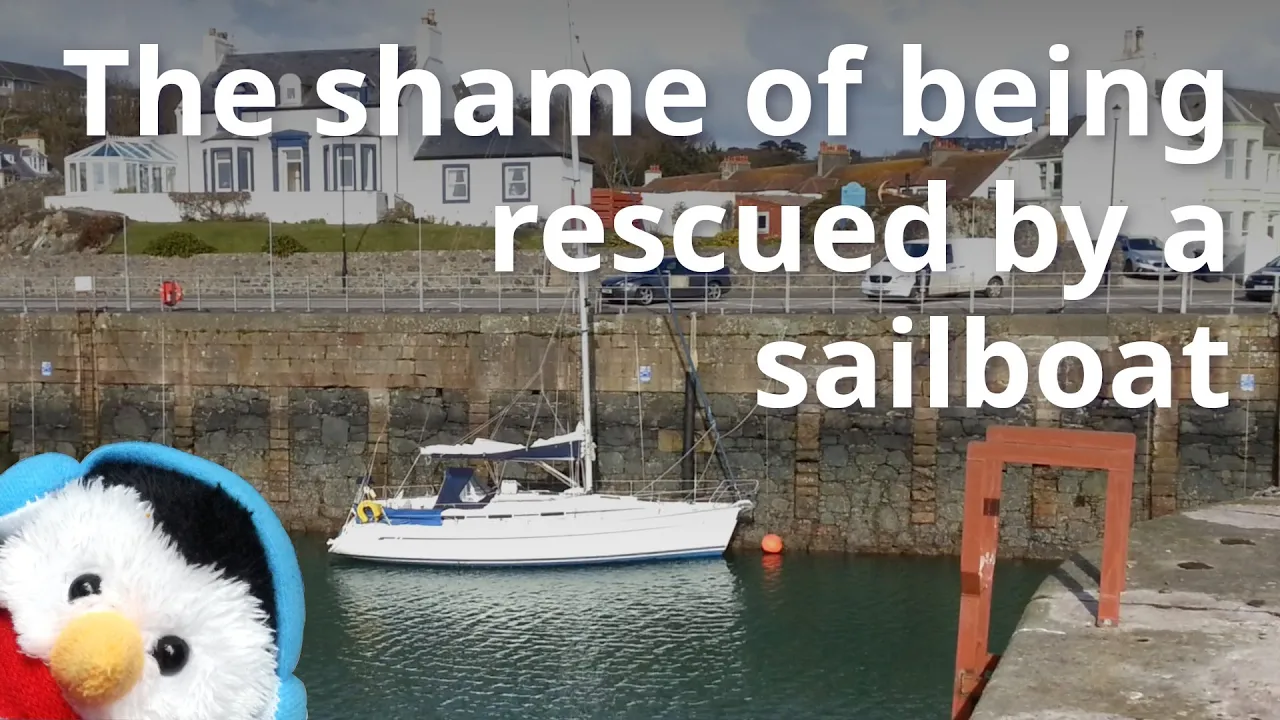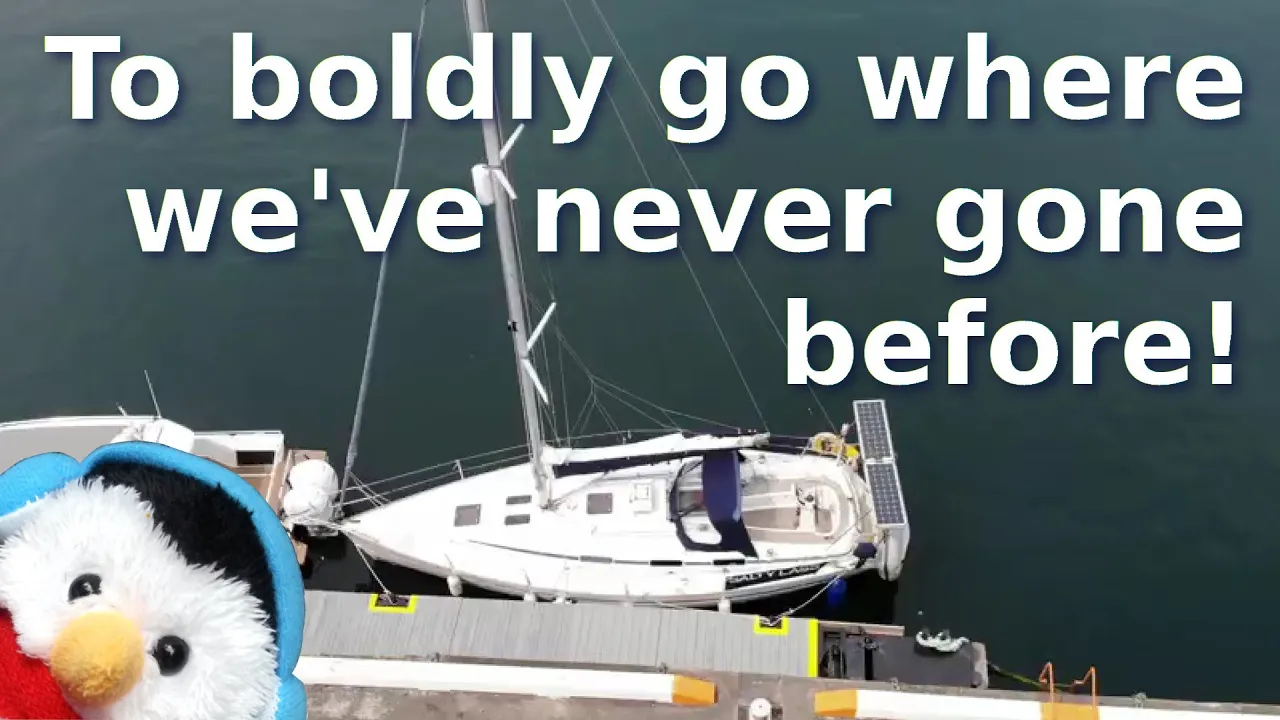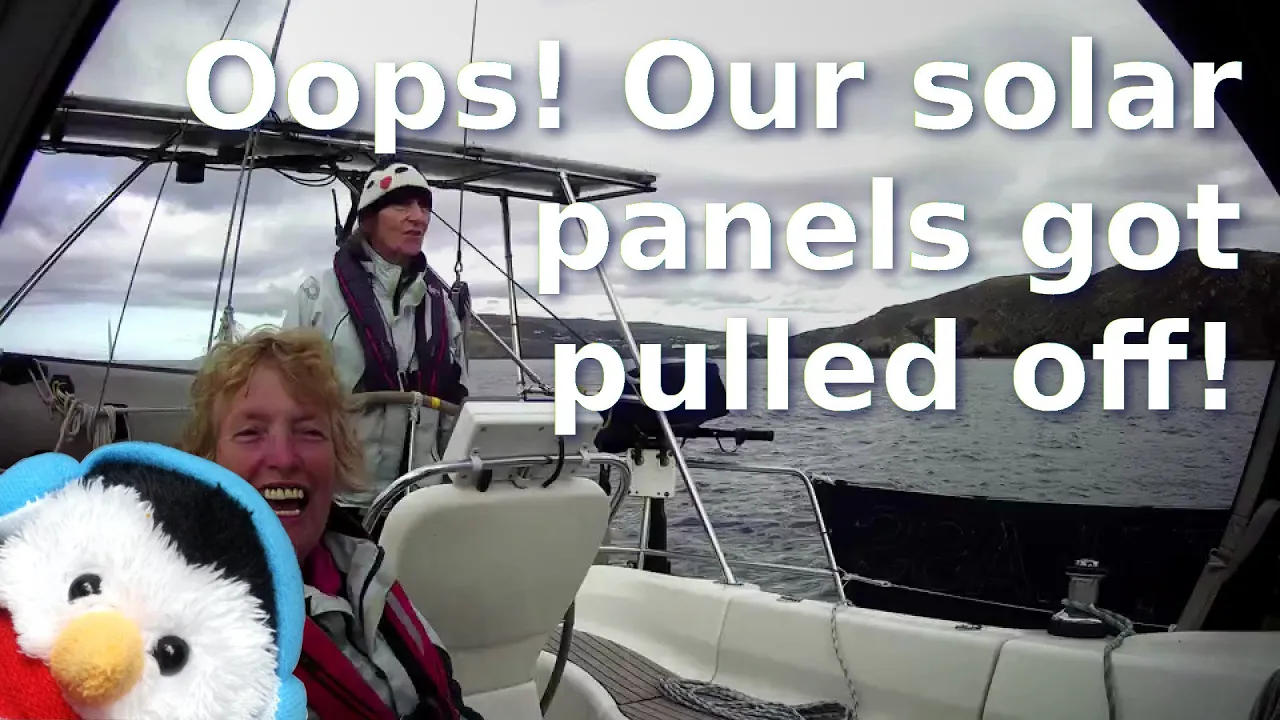We were in Douglas, out on the waiting pontoon. The good thing about the the waiting pontoon is that it is half the price of being inside the inner harbour. There is even electric out on the waiting pontoon, but you would have to have a long electrical cable plus think about how you are going to protect your cable, because there can be up to 6.5m tidal range out there and setting up an electrical cable to deal with that sort of range could be an interesting challenge. For Beverley and I it is not a problem because we have the solar panels on board and by 11:00am to 11:30am, the batteries are fully charged and we can use the power coming in to charge other equipment like lap tops, phones and cameras. We can even use our inverter to run electrical devices if the need arises.
Being out on the waiting pontoon also allows you to practice rafting because there is a limited amount of space on the pontoon and there are a lot of other vessels that need to come in and with the gate opening only every 1/2 hour then it is normal for boats to come in and raft against you. The boats that rafted against Salty Lass were in the fortunate position that we were on board to take their lines, but if you have to raft and there is no one to take your lines then you really need to be able to control your boat speed, so that your crew have the time to attach them selves to the inner vessel. For a short stay, then attaching yourself to somebodies cleats, is reasonable, but if you are going to be somewhere for a longer period then you need to run shore lines so that the weight of your boat is on the shore and not on somebody else's cleats. Although the gate opening at Douglas is approximately every 1/2 hour, priority is always given to the various larger vessels that come into the harbour like the ferry and survey vessels, even the lifeboat, once it has started its movements for coming in after a training exercise gets priority over pleasure craft movements. In a nutshell the outer harbour at Douglas gets used by a huge range of vessels and once you have started moving in the harbour, everyone else needs to wait.
Another disadvantage of being out on the waiting pontoon is that there is no protection from the sea. In fact with a strong wind from a North Easterly direction they actually remove the waiting pontoon because there is so little protection from that direction. While we were there we had the wind from a different direction but still it churned up a lot of chop in the outer harbour and because we had our stern to the entrance then we had a lot of slap on our stern, which caused very little sleep. So we decided to move into the inner harbour.
Mooring to a harbour wall
One of the questions that we have been asked about is mooring to a harbour wall, so while we were at the harbour wall, we talked about just that.
- Fenders - Have your fender high so that they protect the side of your yacht and have lots of them at the bulge
- Look for a ladder as that is what you are going to attach yourself against. Attach to the ladder initially.
- Look for a riser - A riser is a line that is pinned to the bottom of the harbour wall and to the top. It is this riser that will keep you close to the wall as you can run a line from your central cleat around the riser.
- No riser - If there is no riser then you need to create your own by running a line around rungs at the top and bottom on the outside of the ladder. The riser needs to be the full length of the range, so if you come in at high tide, then you must keep somebody on board so that they can adjust the riser. The knots of your riser need to be at the top so that you can remove your riser when you leave. Once you have created your riser attatch your boat to it in the usual way.
- Once your boat is secured to the riser then it is time to attach the boat with a fore and aft line. For these we have two 20m nylon lines, These need to be attached at the top and also onto your deck. So that you keep these lines in then you need to attach an angel which in our case is a large shackle. This shackle will go down as the boat rises. When you are at the bottom of the tide the angel needs to be just touching the water. Have on your yacht extra weights so that if your yacht needs them then you can keep one line tighter than the other. We use our dinghy anchor for this task.
While we were at Douglas we found out about a deal, which is 40nights on harbour walls at £5 per night. The deal is for the while of the summer season which is the 1st April to the end of September and the 40 nights do not need to be continuous, so if you wanted to travel in and around the Isle of Man then this is a great deal. We have also been asked to find out what other facilities would make the Isle of Man more appealing and to pass these along.
Once the weather calmed, we left Douglas so that we could continue our journey.













